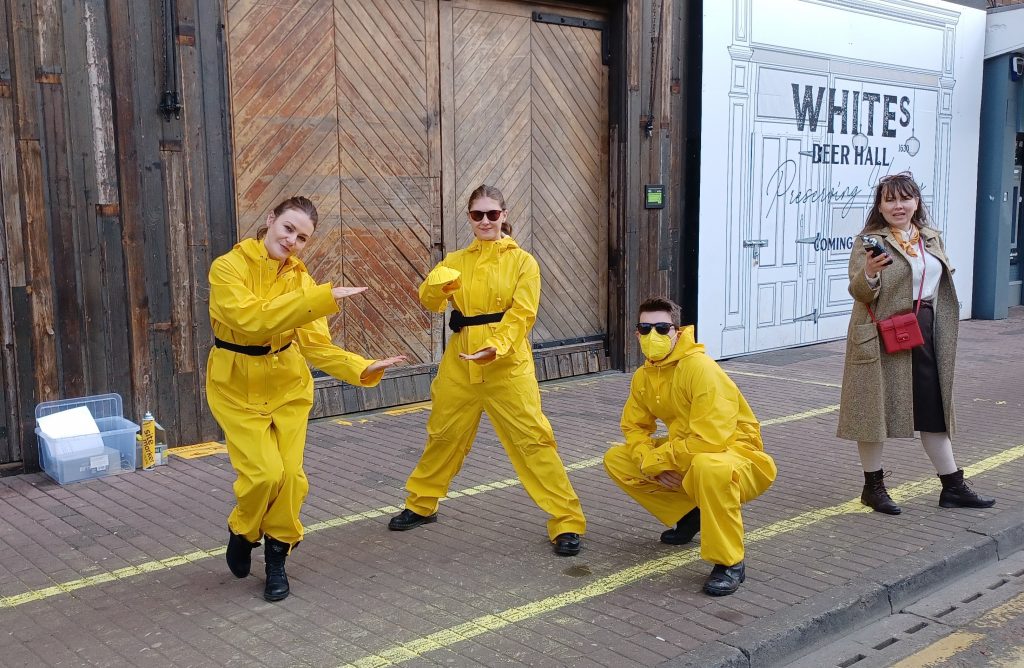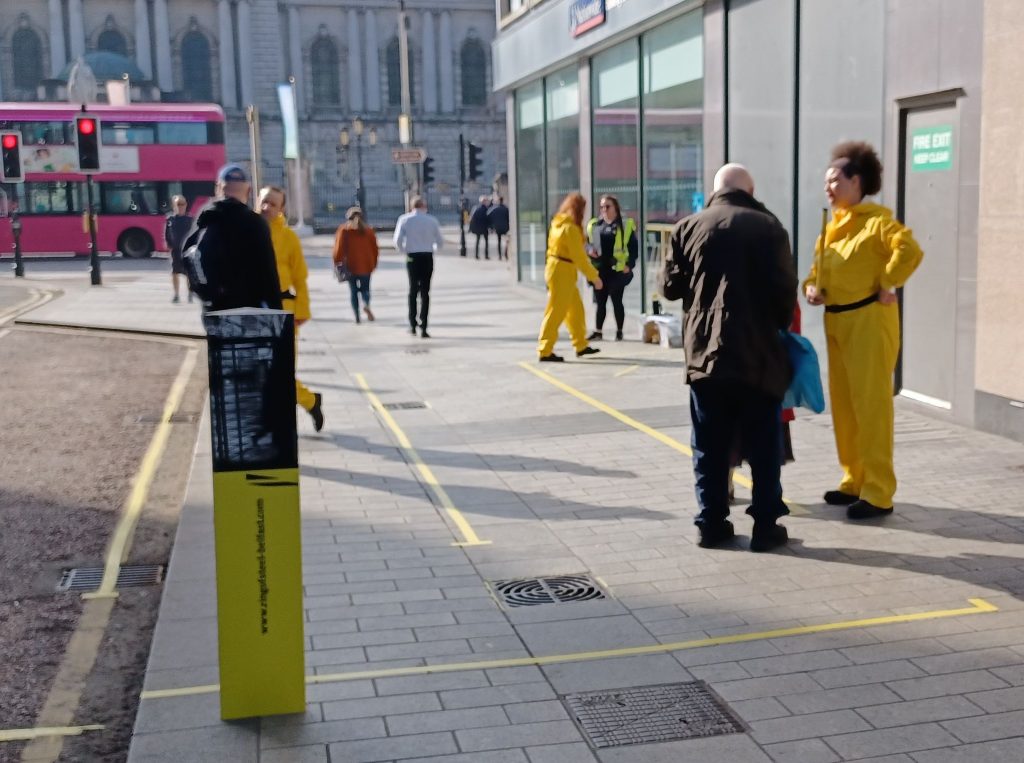Sensing the Troubles as Everyday History by Katherine McKee
At the beginning of 2022, Katherine McKee joined the project as an intern, part of her coursework for a History MA at Queens University Belfast. It was absolutely wonderful having Katherine on board. She made brilliant suggestions and was really great to work with. Katherine has written about what she learned from the experience.
Sensing The Troubles explores the everyday lives of the “ordinary” people who lived through the Troubles. This uses facets of ‘Alltagsgeschichte’, which translates to history of everyday life. This approach highlights that history is a human product, made up of human beings actions and decisions.[1] In the context of Sensing the Troubles, this focus on the every day is to enable us to understand what it was like to live in Northern Ireland during the Troubles. Everyday history can allow us to make causal connections between the micro-historical context, and the metanarratives of macro-history.[2] Thus, the everyday can help us to answer ‘big picture’ questions. However, the focus is always on the micro-historical because it is in these actions and behaviours that history is made. In this way, everyday history helps to break down faceless big actors, such as “the state”, showing that “the state” is made up of numerous human actors choosing to act. For example, “the state” barricaded Belfast and had people be searched upon entering the city. In fact, it was numerous human actors who chose to erect the barricades, and to do the searching. Of course, there are many factors which influenced these actors’ decisions, such as the desire for employment.
When working with everyday history it will become clear that it is fragmentary.[3] In people’s everyday lives there are often conflicting, complex, or unfinished narratives at play. Human life is complex. In a post-conflict society like Northern Ireland it is perhaps best to explore history through a fragmentary approach, rather than seeking to reconcile conflicting ideas. Everyday history also encourages a reflexive look at how historians are also agents in everyday life, who are making history as much as they are writing it.[4]
What did my involvement teach me as a historian?
I attended two group interviews. Both were with women’s groups, one at Barron Hall in Glengormley, and one on the Shankill Road. From assisting Roisín at these interviews, I learnt that her style of interviewing, where you let the interviewees take control of where the interview will go, can work very well. Before this, I had little confidence in my ability as an oral historian to ask the right questions. However, I learnt that an interviewer doesn’t have to ask follow-up questions to every story. Instead, letting the interviewee continue to speak, and have them fill in the silences, can lead to stories with greater depth and originality.
I learnt from conversations which I had with the women after the interviews, and from meetings I have had with Roisín, that the process of being interviewed can be therapeutic. Some of the women remarked on how it was nice to have an opportunity to sit and reflect on the abnormality of life during a conflict, that they had always regarded as “normal”. Others welcomed the opportunity to tell their stories, as they felt that they had been written out of history. One woman remarked on this during an interview saying that; “I kind of think that women have been written out of the Troubles. So the Troubles were just paramilitaries. And I think that one of the hard bits is, it’s as if women didn’t exist during that period of time.”.[5] As mentioned previously, it is a strength of oral history that it gives a voice to the voiceless.[6] An archive of all the interviews will be made. This will ensure that the histories shared will be immortalised, and the often marginalised groups who share their stories can be written back into history.

Sensing the Troubles also conducted interviews on the spot in Belfast city centre for a day. Sensing the Troubles collaborated with the Drawing the Ring of Steel project,[7] conducting interviews with passers-by on the streets of Belfast on 24th March. This event, staged by Kabosh Theatre Company, aimed to illuminate the reality of living through conflict. They had local artists and interviewers set up at the four access points to the city, where people would have been searched during the Troubles.[8] Many people stopped and took part in these interviews and were enthusiastic to do so. This helped to show me that as an oral historian it is important to have the confidence to approach people and discuss your project, as this can lead to very interesting interviews. This event also helped to demonstrate how oral history does not have to be highly academic or controlled. If the right consent process is followed, oral history can be as accessible to the public as a conversation on the street.
All in all
I greatly enjoyed my role in the project. I have learnt a lot about oral history processes and techniques and have spent time reflecting on how to encourage public engagement. The project is incredibly interesting and rewarding. Some strengths of the project include Roisín’s skills as a historian, the idea of combining oral, sensory and everyday history, and how the project gives marginalised groups an avenue in which to tell their histories. All in all, the project helps to involve the public in the making of their own history, and I am glad to have been a part of it.
[1] Paul Steege, Andrew Stuart Bergerson, Maureen Healy, and Pamela E. Swett, ‘The History of Everyday Life: A Second Chapter’, in The Journal of Modern History, Vol.LXXX, No.2 (June 2008), pp.358-378, p.362
[2] Ibid, p.362
[3] Ibid, p.375
[4] Ibid, p.368
[5] Sensing the Troubles interview at Barron Hall, Glengormley (28/02/22)
[6] Lynn Abrams, Oral History Theory (London, 2010), p.5.
[7] Drawing the Ring of Steel project website (https://ringofsteel-belfast.com) (28th April 2022)
[8] Ibid.


